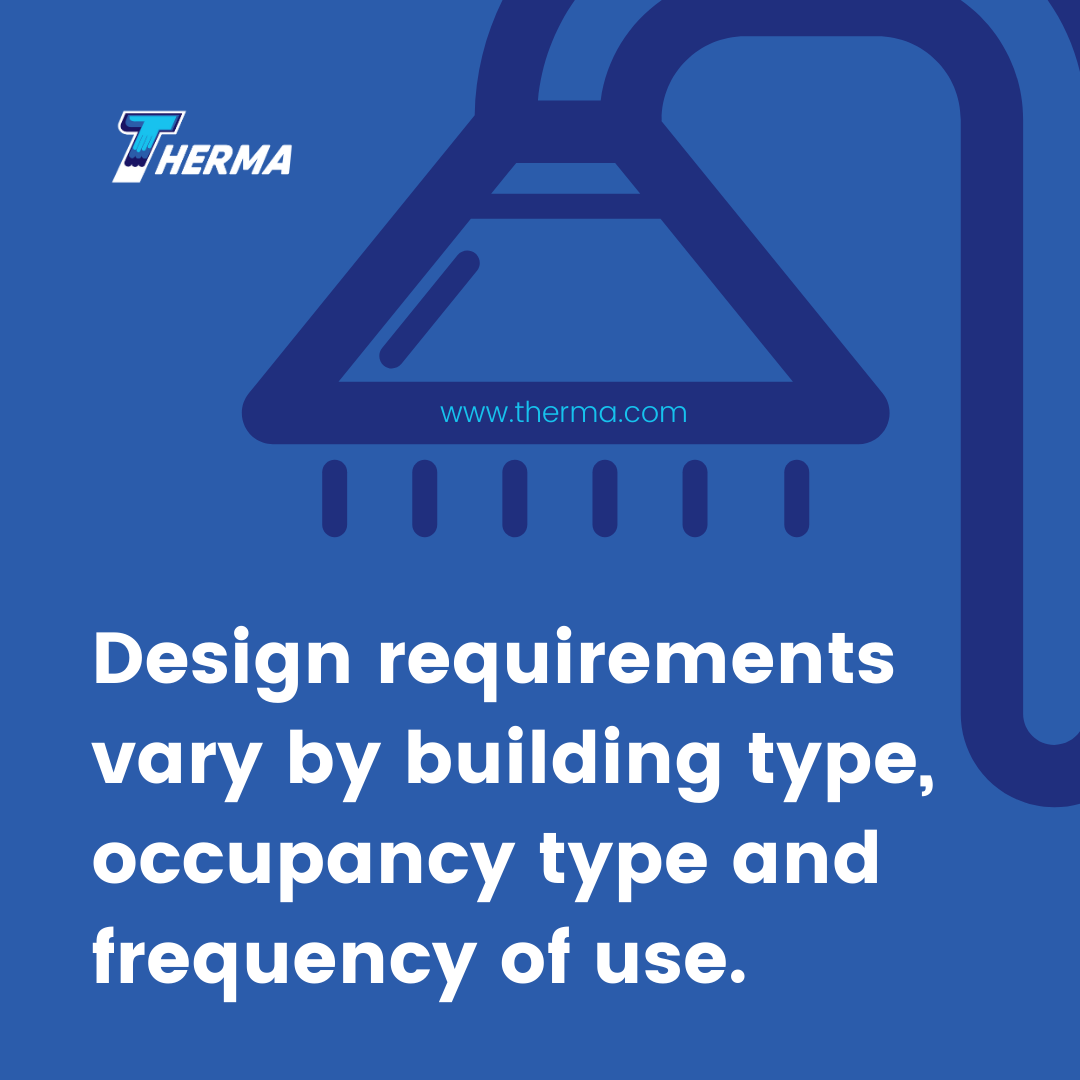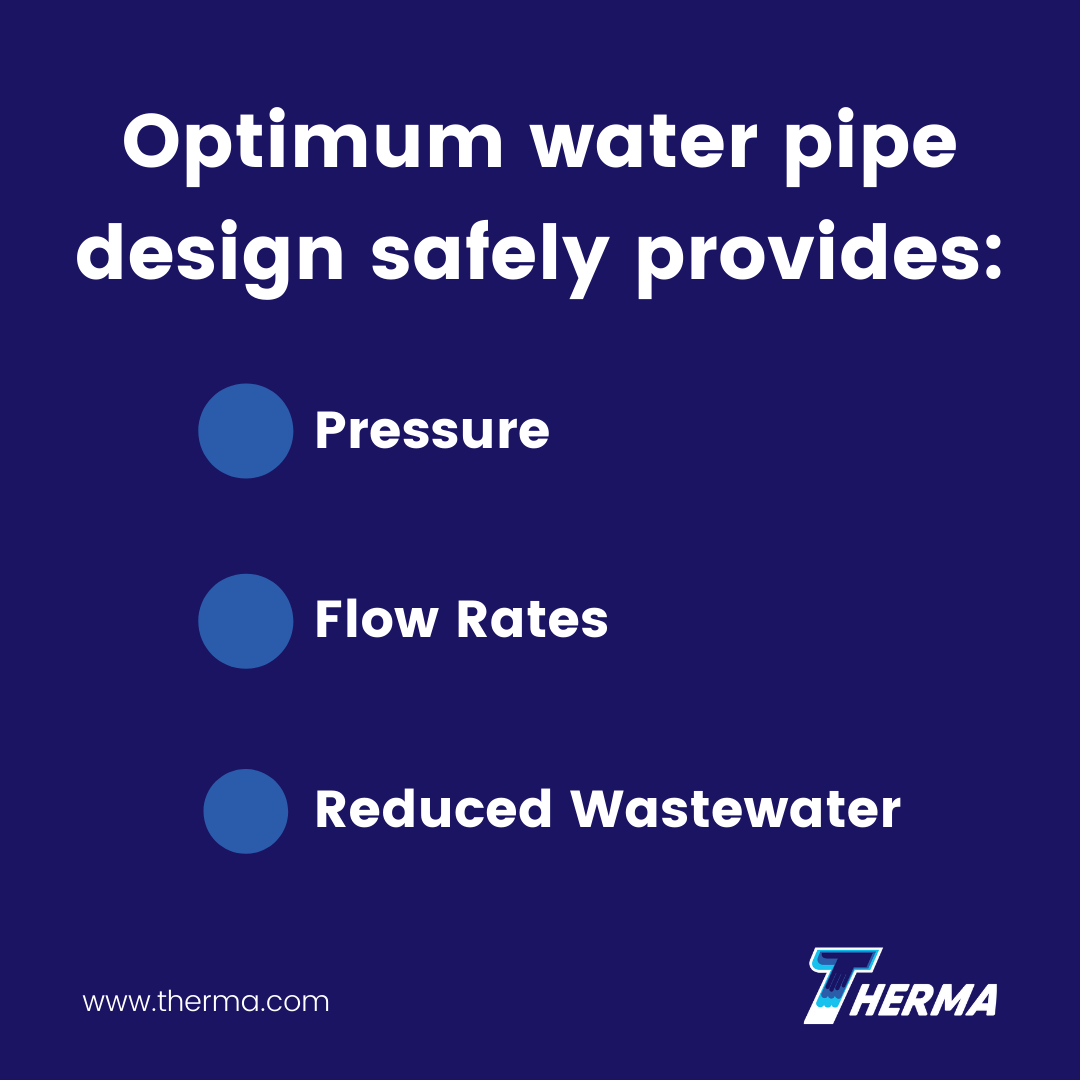Domestic water piping carries water to fixtures in residential or non-residential buildings. The optimum water pipe design safely provides the needed pressures and flow rates without producing a lot of wastewater. Plumbing codes provide minimum guidelines for sizing design elements; however, professionals also need to factor characteristics and requirements for different water sources into piping designs.
Starting at the Source
Most water supplied to nonresidential buildings in the U.S. comes from municipal sources, while natural sources such as wells or rivers are used in limited applications. The source for a project impacts the piping design. Local utilities have requirements on meters, connections to the city main, and on regulating backflow from the building. Natural sources may affect the quality of the water entering the building, requiring filtration or treatment before use. Environmental requirements, especially for discharge, may also apply.
Municipal water systems usually have a minimum pressure guaranteed. Flow tests from the street may exceed that pressure. Designs include valves and booster pumps as needed to adjust the pressure for the water that enters the building. Backflow prevention is required to limit the possibility of contamination from building fixtures.
Breaking the Code
Plumbing codes establish minimum guidelines for the piping design once the water enters the building. The most commonly used codes or standards for pipe sizing and design used by professionals are the International Plumbing Code (IPC), Uniform Plumbing Code (UPC) and American Society of Plumbing Engineers (ASPE) standard. The IPC and UPC focus on requirements to protect building occupants and the public. ASPE standards use IPC and UPC sizing methods and are accredited by the American National Standards Institute (ANSI). While the methods are similar, local codes determine which to use in each area.
Design requirements vary by building type, occupancy type and frequency of use. The IPC and UPC provide minimum guidelines regarding the number and types of fixtures by building based on occupancy rates. While the codes discuss some specific occupancy situations and equipment types, code officials have final say on requirements that fall outside the listed guidelines.

A key feature of the IPC and UPC sizing method is the use of fixture units. Fixture units are design factors that account for flow requirements and frequency of use. The IPC uses water supply fixture units (WSFU). UPC uses both WSFU and drainage fixture units (DFU).
Sizing Things Up
Tallying flow rates for all fixtures in a building entails calculating the demand required if all fixtures were used simultaneously. For buildings such as stadiums or auditoriums, this method would work since there would be periods of high demand, such as halftime, in which most or even all fixtures are used in a short period of time. However, for other projects, estimates based on fixture units are more accurate.
After establishing the number and types of fixtures for the project, the WSFU (or DFU, if applicable) for all fixtures are added together. This total is converted to flow rates in Gallons per Minute (GPM) using tables from the code. Not all fixtures have assigned fixture units, for example, air conditioners and lawn sprinklers. For these types of fixtures, use GPM flow rates.
The final flow rate of all fixtures is used with pressure and velocity requirements and friction loss calculations to determine sizing of pipes, meters and other required equipment such as booster pumps. Friction loss calculations include losses from pipe length and material, fittings and special equipment such as filters. Head losses are included for multi-story buildings.
Professionals consider both normal use and high-demand situations. The design goal is to provide adequate pressure to the furthest fixture without creating waste from oversizing the upstream components or exceeding the allowed maximum pressure.
For all methods, the most efficient water pipe design requires accurate information on fixtures, equipment and pressures. Piping design professionals rely on information from architects, owners, facilities managers and local utilities.

Biography:
Patti Dees is a chemical engineer turned writer. She spins her polymath nature to produce clear and informative pieces on technical topics.
References:
- https://www.csemag.com/articles/sizing-domestic-water-pipes/
- https://www.csemag.com/articles/eight-steps-to-determine-plumbing-system-requirements/
- 2018 International Plumbing Code. https://codes.iccsafe.org/








